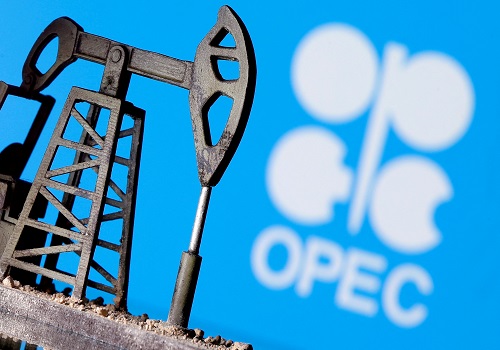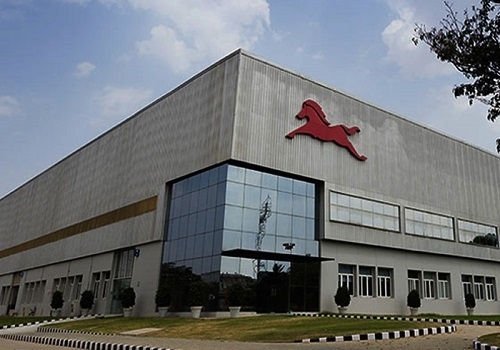Bull run in Indian bourses likely to continue subject to short-term volatility

Follow us Now on Telegram ! Get daily 10 - 12 important updates on Business, Finance and Investment. Join our Telegram Channel
https://t.me/InvestmentGuruIndiacom
Download Telegram App before Joining the Channel
The Indian bourses have been seeing a bull rally in recent times with the indices touching new peaks.
The uptrend is expected to continue in the long run subject to some short term volatility owing to domestic and international geo-political factors, said Pradeep Gupta, Co-founder & Vice Chairman, Anand Rathi Group.
Gupta in an interview to IANS details the reasons for the Indian bourses touching new heights, the drivers, the sectors that drive the bull and other aspects. Excerpts:
Q. Are we seeing a bull on the rampage in the Indian stock markets?
A. Broader level indices, Nifty 50 topped 21,000 levels as the Monetary Policy Committee (MPC) declared that they are keeping the repo rates unchanged to 6.5%. Nifty 50 delivered about 14.86% returns in the current calendar year, outperforming most of its peers on the back of strong earnings growth along with improvement in domestic consumption, with the market capitalisation of BSE listed firms hitting an all-time high of Rs 331 lakh crore, which is about $4 trillion, on the back of gains led by IT, Auto, Metal and Power stocks along with receding worries of a rate hike scenario in the US.
At the MPC meet held on December 8, the RBI governor while keeping the repo rates unchanged, hiked the GDP expectation for next year to a 7% growth rate. He reiterated that the fundamentals of the Indian economy continue to remain strong with the banking sector and corporates showing healthy growth, fiscal consolidation on course, external balance remaining manageable along with healthy forex reserves to help against any global shocks. These are the factors that enabled the recent bull rally that we have been witnessing in the Indian equity markets.
Q. What are the factors -- economic, political and others -- that are driving the markets upwards?
A. As compared to the peers, India's macroeconomic performance remains the most impressive. With an inflation rate of 5% and a GDP growth rate exceeding 7.5% in the first half of the current fiscal year, India continues to be one of the most captivating economies of the world.
The quarterly earnings of corporations for the quarter concluding in September 2023 have met or surpassed expectations. Nifty 50 company earnings increased by 26% compared to the corresponding quarter of the prior year, whereas Nifty 500 company earnings increased by 36%.
Notwithstanding certain fluctuations in net equity investment by international institutional investors in India throughout 2023, the inflows have been substantial on a net basis. Flows of domestic capital into the equity market continue to reach all-time highs, particularly via the systematic investment plan (SIP).
Despite concerns on the valuation front, especially for mid and small cap companies, we think that there is little froth in the Indian equity market. In view of the above, we expect Indian equities to maintain the upward journey in the near term.
Q. Which are the entities that are driving the markets upwards -- foreign institutional investors (FII), domestic institutional investors (DII), retail investors? And why are they investing?
A. The sustained substantial inflows into the Indian equity market, particularly from domestic investors, and the public's interest in primary equity capital raises (especially IPOs) by companies appear to indicate that investors maintain a positive outlook regarding the Indian equity markets.
As a result of the Indian equity markets rapid rise since April 2023, some believe that Indian equity valuations have become excessively high, particularly for mid-cap and small cap stocks.
However, it is crucial to comprehend that the substantial upswing observed in mid and small cap indices in 2023 primarily served as a means to recoup underperformance since early 2018. Furthermore, substantial accelerations in earnings support rallies in these indices.
Q. What is the share of FIIs and domestic institutions in the investment flow? Is the return of the FIIs the only factor?
A. The FII’s have aggressively started allocating back in Indian equities with about Rs.8,000 crore already pumped in the cash segment till the December 6. The DII’s have been net buyers and continue to have their allocation in Indian equity, with a record $3 billion net addition in the month ending October 2023. While the return of FIIs does give the markets a boost, however, the long-term sticky money built by the DIIs via a record SIP book which touched almost Rs.17,000 crore provides continued support and a cushion against any short term shocks.
Q. In your view for how long will this uptrend in the stock markets continue?
A. As stated previously, India maintains the highest macroeconomic performance among its peers. With an inflation rate of approximately 5% and a GDP growth rate exceeding 7.5% in the first half of the current fiscal year, India continues to be one of the most captivating nations on the planet.
The majority of sectors of the Indian economy, such as banking, government finance, industry, and infrastructure, continue to operate efficiently. The uptrend on long term is based on fundamental factors which continue to remain strong, however we do expect short term volatility to be there owing to domestic and international geo-political factors.
Q. What are the chances of the party coming to an end? And in what time frame?
A. In terms of key risk impacting the equity markets would be that the Indian equity market is exposed to significant global risks, such as recession in developed nations, a more gradual relaxation of monetary policy rates than anticipated, and the potential for corrections in the US equity market.
Moreover, the Indian equity market is confronted with substantial risks due to excessive fiscal deficits and public debt levels in the United States, higher-than-anticipated unemployment rates in developed nations, ongoing geopolitical uncertainties, and US elections.
Key risk factors for the Indian equity market on the domestic front include a deceleration in corporate investment and populist declarations by political parties in anticipation of the upcoming general elections, as well as any deceleration in private consumption.
Q. How do you look at India's macroeconomic numbers and its impact on the stock market?
A. The International Monetary Fund (IMF) in one of its reports stated that the Indian economy is well poised to become the world’s third-largest economy by 2027, with a GDP surpassing $5 trillion. On a broader outlook, we began 2023 with apprehensions including the possibility of a continued rise in inflation, rising risk aversion and a recession in developed economies.
But in the majority of instances, the actual events transpired more favourably than anticipated. The Indian equity market rebounded strongly in 2023, reaching several new highs, including one in the recent past, following a lacklustre initial quarter.
In contrast to the substantial decline in returns observed in large cap indices compared to historical norms over the past two years, mid and small cap indices exhibited exceptional performance throughout 2023.
In contrast, market sentiments are considerably more optimistic as we enter 2024. The consensus anticipates a continuation of softer inflation, gradual but early cuts in monetary policy rates in the major industrialised countries, and the absence of at least an annual recession in both the US and Euro area. A number of these may not materialise in practice.
Rapid monetary tightening initiated in 2022 may have a significantly greater adverse effect on growth than is presently estimated. As a result of the inflationary surge that occurred in 2022, the major central banks might be considerably more reticent about reducing interest rates during the current cycle.
Recessions in the euro area and the United States continue to be distinct possibilities. These setbacks, in conjunction with the current overvalued state of the US equity market, indicate that a significant market correction in the United States is probable in 2024.
Historically, Indian equity markets outperformed their counterparts across all medium to long-term investment time periods.
As a result, we anticipate that the Indian equity market, particularly mid-cap and small cap firms, will generate a lower return in 2024 compared to 2023. Therefore we maintain a positive outlook for Indian equities over the medium to long term.
Q. The sectors which are heavy lifters of the stock markets and why?
A. The market is up 4.2% in the last 7 days, led by the Financials and all sectors gaining ground. The sectors that contributed to the maximum percentage of change in the current calendar year was the revival in real estate followed by industrials, consumer discretionary, healthcare and financials while the laggards were utilities and energy.
If we look at the category or type of investing, we favour growth stocks over value stocks and investment theme stocks over consumption team stocks over a 12-month period. Our outlook is optimistic regarding two-wheelers, consumer goods and services, information technology, and cement at the sector level.



















